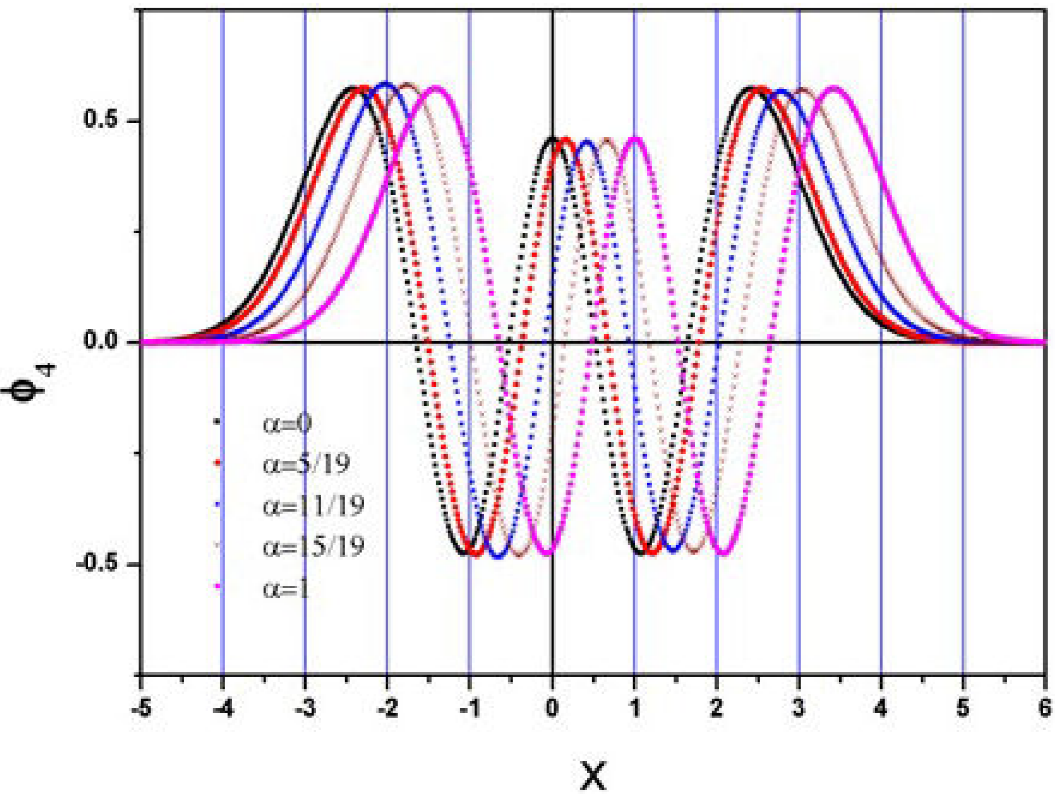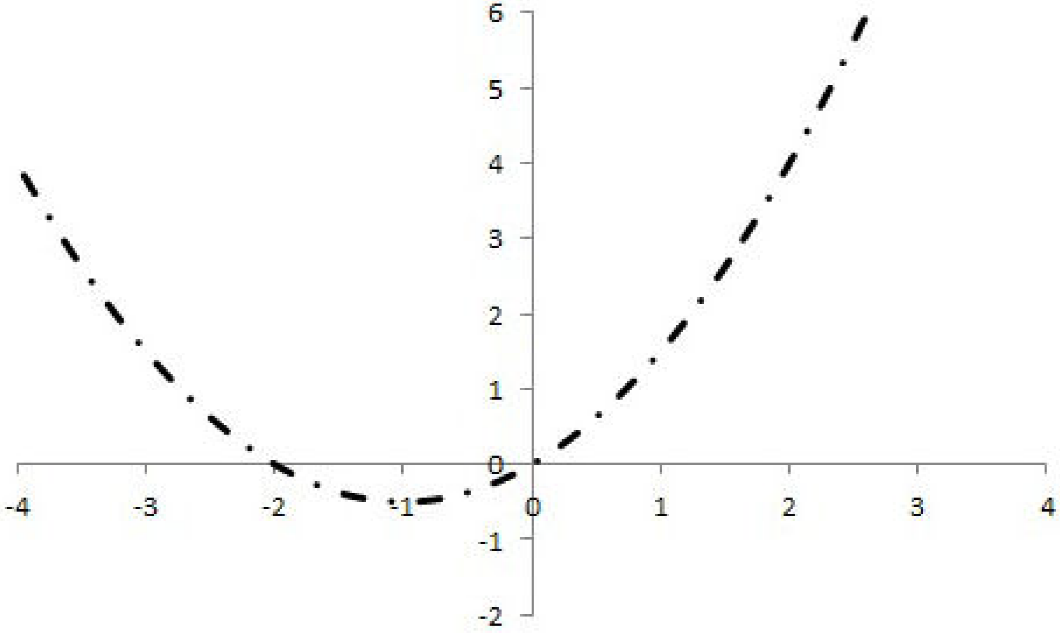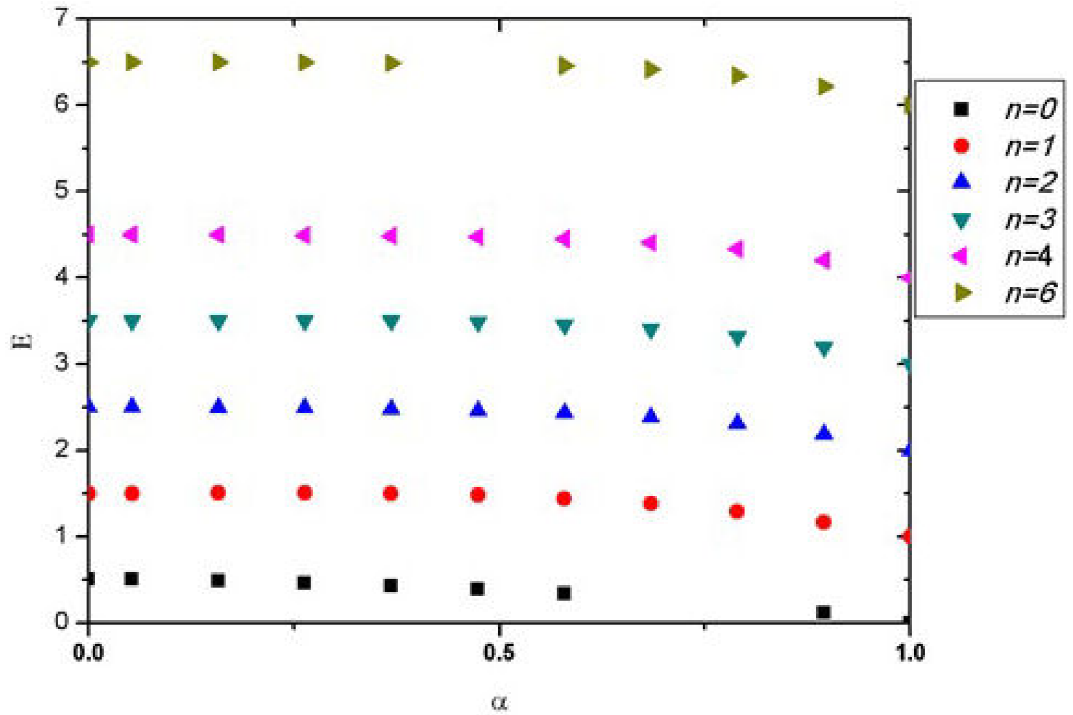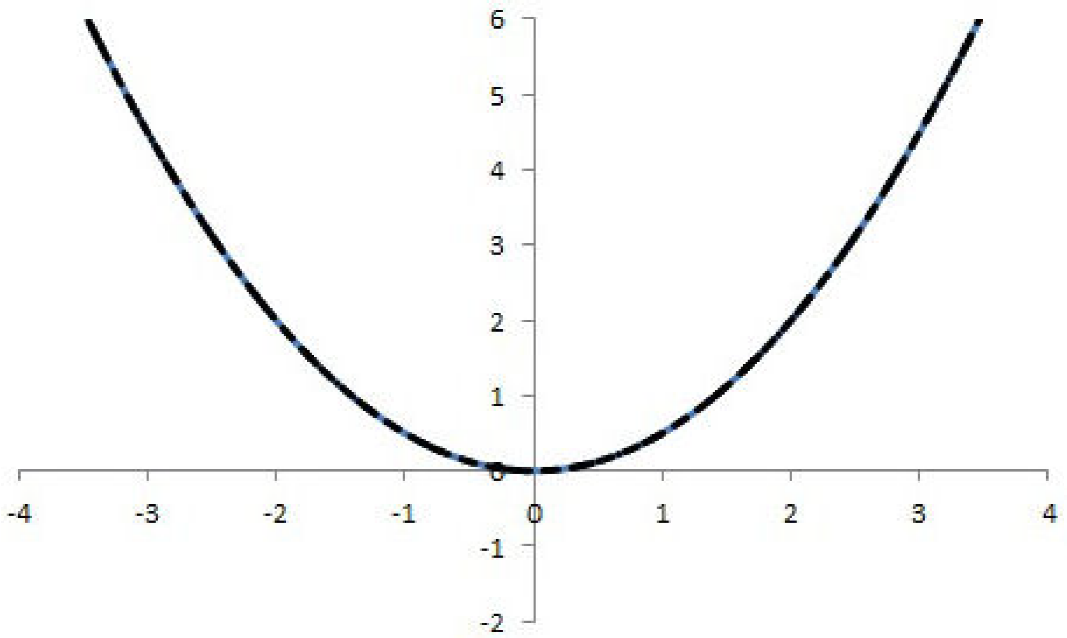PACS: 45.10.Hj; 03.65.Ge; 65L06
1. Introduction
Fractional quantum mechanics has been of great interest by many researchers recently. Laskin1 has developed fractional generalization of the Schrödinger equation, Dong and Xu2 used a new equation to study time evolution of the space-time fractional quantum system in the time-independent potential fields. Dong3 solved Schrödinger equation with infinite potential well using Levy path integral approach, where he obtained among other things the even and odd parity wave functions. Narahari et al4 presented a survey of several approaches that have been proposed to solve the fractional simple harmonic oscillator. He discussed the advantages and disadvantages and proposed a generalization of the integral equation of the simple harmonic oscillator that involves physically meaningful initial conditions. Rozmej and Bandrowski5 and Mahata6 discussed some applications of a fractional approach to the Schrödinger equation. Herrmann7 investigated fractional derivative in Schrödinger equation with an infinite potential well. Ibrahim and Jalab8 introduced analytical and numerical solutions for systems of fractional Schrödinger equation using Riemann-Liouville differential operator. Laskin9,10 applied fractional calculus to quantum mechanics. He studied the properties of fractional differential equation and applied it to a Hydrogen-like atom. Guo and Xu11 solved the fractional Schrödinger equation for a free particle and for an infinite square potential well and obtained the energy levels and the normalized wave functions. Many applications of fractional quantum mechanics can be obtained in Herrmann12, Kilbas et al13 and fractional differential equation can be found in Podlubny14.
In all the aforementioned works the authors dealt with the second derivative concerning the kinetic energy. They converted the second derivative to a fractional derivative and showed its effect on the wave function and eigenvalues of the energy. In this work we will demonstrate the effect of an evolved electric potential on a charged particle placed in a harmonic oscillator; the potential is developing instead of growing. The derivative in this work is kept unchanged. The idea of evolution of some physical phenomena has been studied using fractional calculus to give deeper understanding of physical phenomena. It was possible to do so through varying the order of fractional differentiation from zero to one and observing the change in the phenomenon under consideration, and observe how it develops from one state to the other through the fractional operation. Engheta15,16,17 applied the idea to the electromagnetic multipole showing the evolution of multipole from a certain order to the higher one. Rousan et al18 have studied such evolution in gravity and showed the evolution of a semi-infinite linear mass from a point mass. Rousan et al19 showed how the oscillatory behavior (LC circuit) goes over a decay behavior (RC circuit) as the order of fractional differentiation goes from zero to one, and vice versa. Also Rousan et al20 studied fractional harmonic oscillator and suggested that the system goes through an evolution process as the fractional order goes from zero (free) to one (damped), letting it pass through intermediate stages where the system can have a damping character and the material can be thought as a pseudo-damping material. Gómez-Aguilar and co-workers contributed intensively to the field of fractional calculus. They studied fractional electrical circuits. They introduced an analytical solution to LC, RC, RL and RLC circuits in terms of the Mittag-Leffler function depending on the order of the fractional differential equation21,22. Also they studied the transitory response and analyzed time and frequency domain of RC circuit applying Caputo fractional derivative23,24. Moreover they described the dynamics of charged particles in electric fields employing Laplace transform of Caputo derivative25. They also used Fourier method to find the full analytical solution of electromagnetic wave in conducting media considering Dirichlet conditions26. Fractional electrical circuits were studied and analyzed from all aspects by Kaczorek and Rogowski 27,28. Obeidat et al29 studied the evolution of a current in a wire and estimated the time required for the current to reach its maximum value. A full review of the scope of applications of fractional calculus in physics and its applications on evolution process is found in18.
2. Method
The one dimensional time independent Schrödinger equation is given by:
Where m is the mass of the particle influenced by the potential V(x),
This equation has a well-known solution given in many quantum mechanics text books as 30
Where
If we assume the particle has a charge q and the above oscillator is placed in an electric field of strength
Complete the squares, the above equation reduces to
With
And
So, the solution again is the same as the normal harmonic oscillator but with a shift in the displacement and with modified quantized energy.
In this work, we suggest a potential of the form
Where
The factor
There exist exact solutions for the limiting values of
Where (g)x and s(x) are known functions, with initial conditions given by
and s(x)=0, the final form of Numerov´s formula is
With
The values of constants throughout this work will be considered as:
3. Results and Discussion
The idea of this work is to demonstrate the effect of an evolved electric potential on the charged particle placed in a harmonic oscillator; the potential is developing instead of growing.
We first consider the wave function. As for the case of no electric field, which means that the value of

Figure 1. The figure shows the wave function (n = 4) for different values of
Taking the range of x from -5 to +5, the wave function for the case of n=4 for different values of
The values of energy are plotted versus
It might be useful to show how the potential itself is being developed as

Figure 4. The potential for

Figure 5. The potential for selected values of
It is worth mentioning that the shifts should reverse directions if the electric field is applied in the opposite direction, or considering a negative charge.
4. Conclusion
We demonstrate the effect of an evolved electric potential on a charged particle placed in a harmonic oscillator. The effect of the evolved potential on the wave function and energy is shown for different states, where the wave function experienced a shift towards increasing fraction. We also show how the potential itself develops fractionally and how it was reshaped until it takes the form a fully developed potential. In future work, the anharmonic oscillator will be studied fractionally to have a better understanding of thermal expansion.











 text new page (beta)
text new page (beta)




